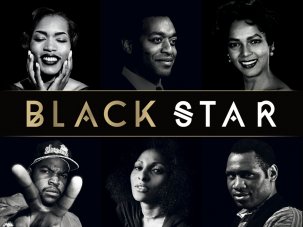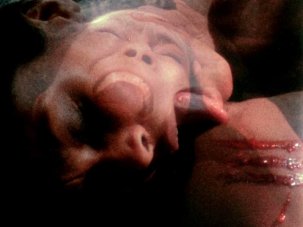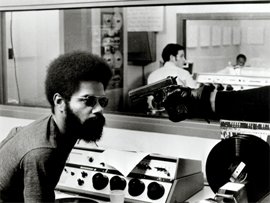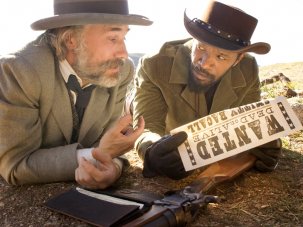The status of Melvin Van Peebles’ Sweet Sweetback’s Baad Asssss Song (1971) as a classic of that cinematic movement, blaxploitation, which also gave us Gordon Parks’ Shaft (1971), Larry Cohen’s Black Caesar (1973) and Jack Hill’s Foxy Brown (1974) would appear to have been firmly established. The film does have its detractors: Joan Mellen, in her book Big Bad Wolves: Masculinity in the American Film (Elm Tree Books, 1977), took Van Peebles to task for “marrying [his] criticism of racial injustice in America to the myth of the inexhaustible sexuality of the black male, refurbishing the old racist stereotype of the ‘buck’, the black stud… [Sweetback] is nothing more than an embodiment of how white society has fantasised black sexuality”.
Sweet Sweetback’s Baad Asssss Song screens at BFI Southbank on 7 and 12 November as part of the BFI’s Black Star Season.
What friends and foes agree on is that Van Peebles created a hero with whom black audiences could uncomplicatedly identify, one who was barely distinguishable from Shaft (Mellen specifically makes this connection). Few seem to have taken into account just how odd Sweet Sweetback is when seen as straightforward exploitation or agit-prop.
For one thing, Sweetback, played by Van Peebles himself, is a curiously passive figure. He delivers barely half-a-dozen lines of dialogue, and is most frequently seen running away from the police, just like Buster Keaton in Cops (1922).
More significantly, he is explicitly defined as the object for a look that is usually female. The film even begins with a close-up of a woman looking, a shot rendered particularly striking by the director’s decision to structure it as a still frame, which achieves motion only after a few seconds of stasis. The next shot shows two more women looking at what is clearly the same off-screen space, while the third shot reveals the faces of another two women, one of whom has her eyes concealed behind dark glasses.
It is only with shot four that we finally see what all these women have been contemplating: a young African-American boy (played by the director’s son, Mario Peebles) sitting at a table hungrily devouring some food. It is not immediately obvious why this boy, with his air of nervousness and down-at-heel appearance, is the recipient of such feminine admiration. But when he is taken into another room and encounters a naked woman – who insists “You ain’t at the photographer’s. You ain’t gettin’ your picture taken. Move!” – it becomes evident that, despite his youth, he is regarded as something of a sexual athlete.
Towards the end of this scene, a cut shows the adult Sweetback (whom we have already seen running down a street in the image accompanying the opening dedication) in bed with the same woman. This transformation from child to adult neatly makes the point that the protagonist has grown up in a brothel where he was expected to service the female clientele. But the presentation of Sweetback as a submissive sexual object pointedly complicates any tendency we might have to regard him as a someone who is in a position of control, either of the look or the narrative.

Sweet Sweetback’s Baadasssss Song (1971)
If this might seem a strange way of introducing a new black hero to viewers who (in the words of the dedication) have “had enough of the Man”, the following scene, which contains what we might call the second introduction to Sweetback, is stranger by far. It takes place in a sex club where an audience (male and female, black and white) watches a pair of women parodically performing the rituals of courtship.
One of these women is wearing masculine clothes and a hat, as well as a blatantly fake beard. She soon removes her clothes (but not the hat or the beard), revealing her bra, and the two women go through the motions of sexual intercourse. As the bearded woman clasps her hands together in prayer, an effeminate man wearing a white dress appears, declares himself to be “the good dyke fairy godmother” who has come “to answer the prayers of a good dyke”, and waves the magic wand he is carrying. The bearded woman then removes her bra, exposing her breasts, and the image dissolves to a shot of a hairy masculine torso. We subsequently see the hat and false beard being removed, revealing Sweetback, with his real beard, concealed beneath.
Although this is supposedly part of the routine taking place in the club, we are given no sense of precisely how, in the film’s reality, Sweetback entered the room and was substituted for the woman in male clothes. On the contrary, it’s as if we have observed a genuinely magical event. This transformation is echoed later when Sweetback, now on the run from the authorities, encounters a motorcycle gang whose leader is only revealed to be a woman when she removes her helmet. These confusions of sexual identity point to a marked uncertainty about those idealised notions of black masculinity which have been imputed to Sweet Sweetback.
And this uncertainty spills over into the overtly political aspects of the project, which superficially appears to be offering us Sweetback as an embodiment of the black struggle. The film is actually extremely ambiguous on this point, the onscreen text with which it concludes – “Watch out. A Baad Asssss Nigger is coming back to collect some dues…” – being contradicted by the preceding narrative, which has Sweetback escaping to Mexico, with no possible hope of returning. What, indeed, could he do if he returned, except keep on running from the police?
The incoherence of this conclusion, taken alongside those transformations via which Sweetback is introduced and the often dreamlike tone – in which dialogue is repeated, as in a loop, and the already dark cinematography further distorted by superimpositions, split-screen effects, stills and dissolves – indicates that Van Peebles’ project may be far more radical than even Sweet Sweetback’s most fervent admirers believe, its aim being to render everything – gender roles, political protests, narratives, images – unclear.
This is a work in which white fantasies of black masculinity and black dreams of revolution ultimately erase each other, suggesting the need for a Godardian return to zero, in which every concept must be rebuilt from the ground up. Which is about as far from Shaft as it is possible to get.
-
The Digital Edition and Archive quick link
Log in here to your digital edition and archive subscription, take a look at the packages on offer and buy a subscription.











